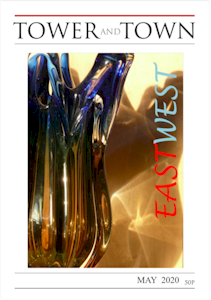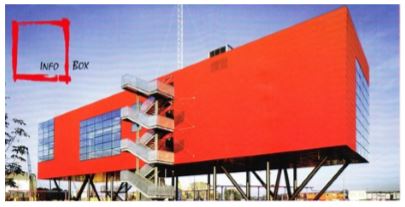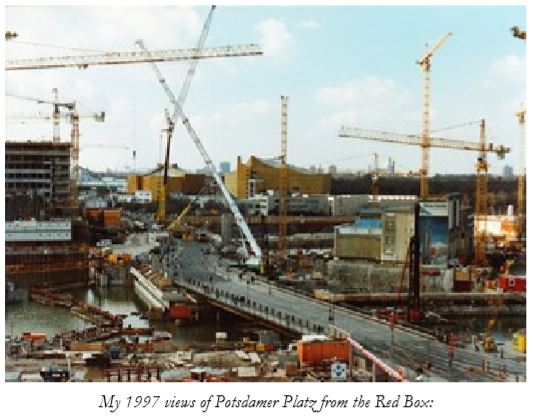

Tower and Town, May 2020 (view the full edition) (view the full edition)The Unwrapping Of Berlin
I was fortunate to be one of the first western scientists to visit East Germany after the momentous events of 1989. An early invitation to deliver a lecture at Rossendorf Forschungszentrum, the nuclear research centre on the outskirts of Dresden, led to several long stays during 1990s as a guest scientist from the University of Oxford. On one such a stay in Dresden I received an invitation to give a lecture at the Hahn-Meitner nuclear institute in Berlin. This proved to be much more rewarding than expected. I was busy looking through my lecture notes when the modern morning train moved out on time from Bahnhof Dresden-Neustadt. Two other lines of thought crossed my mind during the journey: the first concerned anticipating meeting my scientist friend, Dr Andrea Denker, (now head of the Synchrotron Accelerator, Berlin), at the train platform in Berlin; the second was realising that I have missed the wrapping in reflective material of the 19th century Reichstag Building as devised by the artists Christo and Jeanne-Claud. This required 24 year effort, and the artwork was realised in June 1995 following a political vote. The installation, however, proved to be transformational till the building was unwrapped and handed over to the builders for renovation and construction of the iconic glass and mirrors dome by the British architect Norman Foster. Many hailed the cleansing values of the artwork and acknowledged the metaphorical new beginning symbolised by its unwrapping. Andrea took me to the institute where I gave my lecture. This freed us for some Berlin touring on the following day. It was on that particular day that I witnessed a capital in the making. A Red Box with a view We passed the dome-less ruin of the Reichstag Building towered by a set of building cranes as we headed to our destination 1Km south past the Brandenburg Gate along Ebert strasse. Soon we arrived at the southern right corner of Tiergarten Park and the object we sought was there clearly on our left at Leipziger Platz 21……THE RED BOX. (please refer to the locations marked on the title page, below, and the following page). Designed by Schneider und Schumacher “The Red Info Box” was intended to be a temporary structure to provide information about, and a viewing station for, the construction around Potsdamer Platz. It was raised eight meters above the ground on irregularly-placed steel tubes in order to surmount the Wall in exuberance not commonly noted in Berlin at that time. Oddly enough though I have since discovered that the Box was initially installed straddling the actual Berlin Wall, but that the underneath section of the Wall was later dismantled. Andrea and I looked at architectural exhibits within the interior of the Box before climbing to the top platform in order to view the biggest building site in Europe which was expected to turn into a futuristic centre of commerce at the heart of Europe's youngest capital city. But there was also in sight a folly part of a fading lunar desolation on our left, namely a Berlin Wall curved section waiting to be submerged under the dunes of time, as would be the Red Box and our own tracks from that innocent day at the would be capital Berlin. Designed by Schneider und Schumacher “The Red Info Box” was intended to be a temporary structure to provide information about, and a viewing station for, the construction around Potsdamer Platz. It was raised eight meters above the ground on irregularly-placed steel tubes in order to surmount the Wall in exuberance not commonly noted in Berlin at that time. Oddly enough though I have since discovered that the Box was initially installed straddling the actual Berlin Wall, but that the underneath section of the Wall was later dismantled. 
Andrea and I looked at architectural exhibits within the interior of the Box before climbing to the top platform in order to view the biggest building site in Europe which was expected to turn into a futuristic centre of commerce at the heart of Europe's youngest capital city. 
But there was also in sight a folly part of a fading lunar desolation on our left, namely a Berlin Wall curved section waiting to be submerged under the dunes of time, as would be the Red Box and our own tracks from that innocent day at the would be capital Berlin. Raik Jarjis |